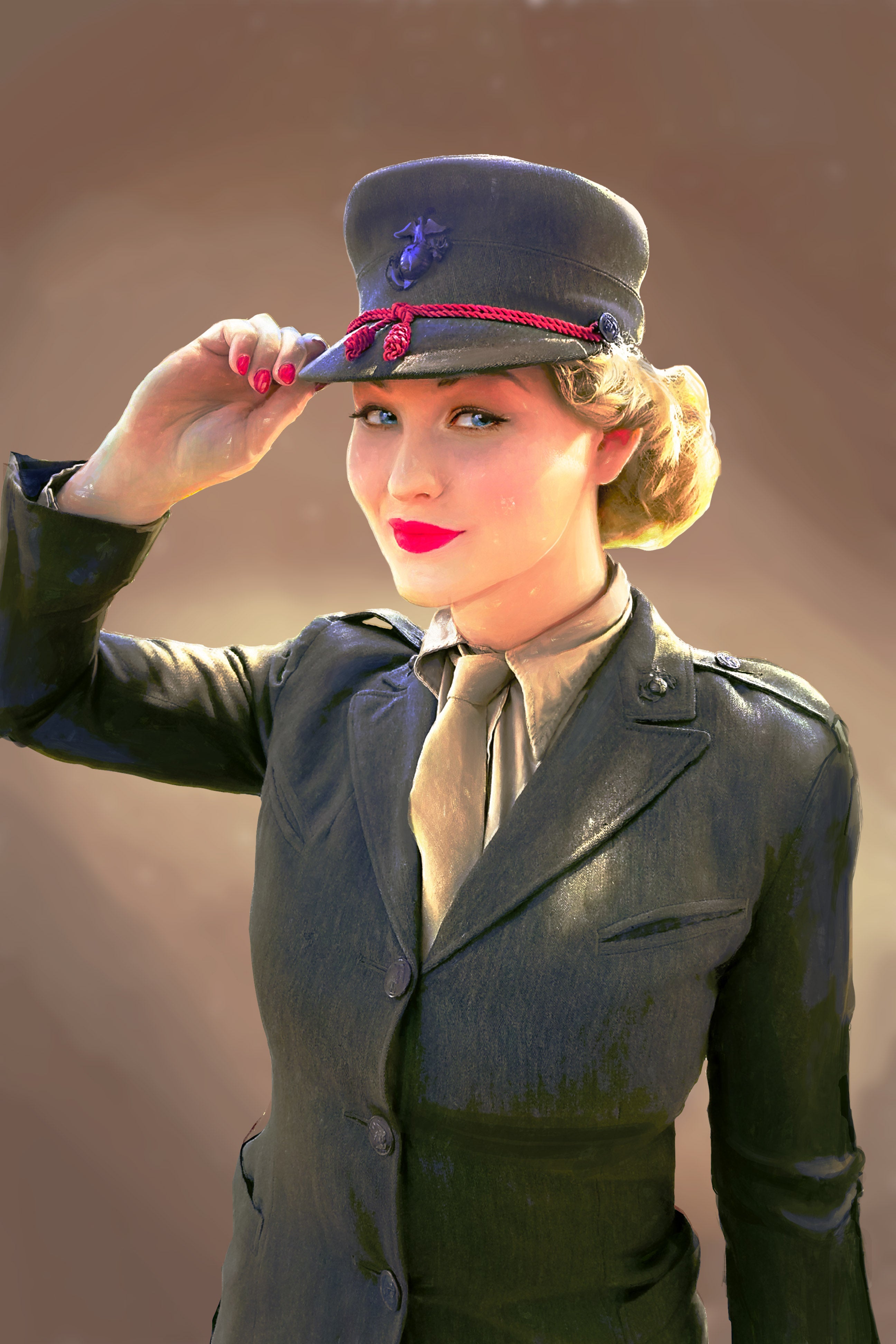[ad_1]
Behind the Shade: Bésame Cosmetics 1941 Victory Crimson
It’s 6 am and your alarm clock is singing louder than the birds. You slowly open your eyes, groggily getting accustomed to your brightly lit room. You continue to have not fairly gotten use to waking up at this hour. Gone are the glamorous events and dancing the night time away to Moonlight Serenade by the ever well-liked Glenn Miller. Now you’re a lady of the workforce, one in every of many who’ve grown accustom to rigorous labor. You are taking delight in your new profession, fortunately doing all your half for the continued warfare. You stroll to your closet and select your outfit for the day— an olive inexperienced Marine Corps Uniform. With confidence you set in your uniform, rigorously adjusting the jacket so it lays easily. You pull your hair again and tuck your curls up away out of your shoulders earlier than inserting your cap upon your head. Subsequent, a easy swipe of pale powder on the face, a delicate pink rouge for the cheeks, thick brows, and lengthy luscious lashes. Lastly, your army issued lipstick – a brilliant, vibrant pink that completely matches your uniform’s trim. It’s your favourite shade, good for the assured, patriotic lady of the Forties.

The Forties was an period brimming with patriotism, optimism, and daring pink lips. America had simply entered the second World Conflict and girls’s roles within the office started to be redefined. The Thirties noticed girls as nurses, faculty lecturers, and homemakers. Nevertheless, with males off at warfare, the Forties lady might now work in factories, on meeting strains, and even be part of the army. On the urging of Eleanor Roosevelt (the primary girl on the time), and Basic George Marshall, the primary girls’s department of service was established in 1941— the Ladies’s Auxiliary Military Corps (later to be often called Ladies’s Military Corps).

With girls turning into increasingly more concerned within the warfare effort, one would suppose make-up was a misplaced precedence. Nevertheless, through the decade “magnificence was your obligation” and regarded an act of patriotism. Crimson lips symbolized victory, optimism, and impacted morale. Crimson lipstick was seen an acceptable shade for any event: at residence, within the office, and even energetic obligation.
Within the early Forties, well-known make-up artist, and girls’s activist, Elizabeth Arden was approached to create a lipstick particularly designed for ladies in service. In 1941 “Montezuma Crimson” was created. It was a brilliant, vibrant pink, and completely matched to the pink piping and chevrons on girls’s army uniforms. Montezuma Crimson was issued to army girls in an official equipment which included the attractive pink lipstick, an identical cream rouge, and nail polish.
As the recognition of Montezuma Crimson blossomed, the general public demanded a shade of their very own. Elizabeth Arden created “Victory Crimson”, amongst different reds, so any lady might proudly honor her nation.
Impressed by the energy, and optimism of the Forties lady, Bésame’s very personal “1941 Victory Crimson” is a devoted replica of the pink lipstick as soon as issued to army girls. Whereas magnificence is probably not thought of a “obligation” for at the moment’s life-style, this shade will eternally be linked to the assured and provoking girls of the Forties.

picture courtesy of @MissVintageLady

picture courtesy of @missgolden_lady

picture courtesy of @mikalakitty
Sources:
Hernandez, Gabriela. Traditional Magnificence: the Historical past of Make-up. Schiffer Publishing Ltd, 2017.
Historical past.com Employees. “American Ladies in World Conflict II.” Historical past.com, A&E Tv Networks, 2010, www.historical past.com/matters/world-war-ii/american-women-in-world-war-ii.
8 feedback
[ad_2]



